15 top science & tech leaders offer surprising predictions for 2018
What will the new year bring?
by David Freeman, Denise Chow and Prachi Bhardwaj /
What will the new year bring?Just_Super / Getty Images/iStockphoto
The past year has been a momentous one for science and technology. From the detection of gravitational waves (predicted almost a century ago by Einstein) to the rise of virtual currencies like Bitcoin to the creation of genetically modified human embryos, 2017 was marked by all sorts of remarkable discoveries and innovations.
What will 2018 bring? No one knows for sure. But as we did for 2017, we asked top scientists and thought leaders in innovation what they expect to see in the new year. Here, lightly edited, are their predictions.
Sean Carroll: Understanding quantum spacetime
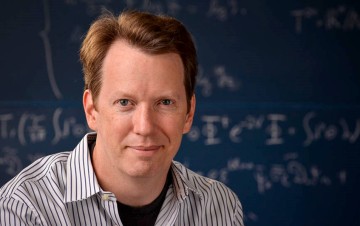
Dr.
Sean Carroll is a theoretical physicist at the California Institute of
Technology in Pasadena. His most recent book is "The Big Picture: On the
Origins of Life, Meaning, and the Universe Itself."
I'm going to go out on a limb and predict that we'll see dramatic advances in understanding the quantum nature of spacetime
itself. I won't make any large bets on this possibility, since
theoretical research is notoriously gradual and unpredictable. But the
ingredients are in place for moving our understanding substantially
forward.
Quantum mechanics is the wonderfully
successful theory of how the world behaves at the microscopic level,
while on large scales space and time are wedded together in Einstein's famous general theory of relativity.
Reconciling how both of these ideas can be true at the same time has
been a longstanding puzzle for theoretical physicists. Recently, we have
been bringing new tools to bear: information theory, the many-worlds
interpretation of quantum mechanics, and an improved understanding of
black-hole entropy. The time is right to finally figure out the quantum
ingredients out of which space and time are made.
Leroy Chiao: Cryptocurrency takeover
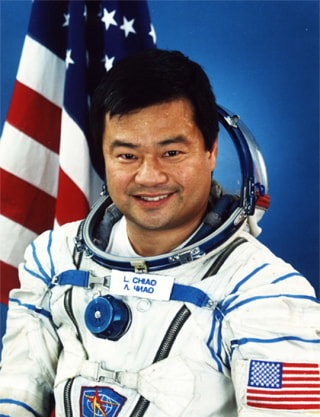
Dr.
Leroy Chiao is CEO and co-founder of OneOrbit LLC, a Houston-based
training and education company. He served as a NASA astronaut from 1990
to 2005 and flew four missions aboard three space shuttles and once
co-piloted a Russian Soyuz spacecraft to the International Space
Station.
As an astronaut, I am always
following developments in space exploration programs, both government
and commercial. However, while not directly linked to space, my tech
prediction for 2018 is about Bitcoin (BTC) and other cryptocurrencies.
I believe that 2018 will see mainstream adoption of BTC in a
significant part of the worldwide financial industry. In the coming
years, the current 1,300 or so cryptocurrencies will battle it out, with
just a few left standing. In the future, BTC or its successor would
likely be the currency on the moon and Mars!
George Church: Big leaps in synthetic biology
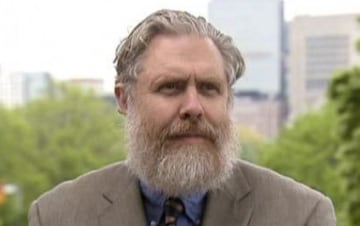
Dr.
George Church is a professor of genetics at Harvard Medical School in
Boston and director of personalgenomes.org. He is the author of
"Regenesis: How Synthetic Biology Will Reinvent Nature and Ourselves."
The
year 2018 will finally see the public embrace million-fold cheaper
personal genomes, thanks to better education and awesome software.
Leveraging such revolutionary diagnostic costs, therapeutics costs may
follow — via radically engineered nutritional supplements, veterinary
products, yogurts, citizen science, and preventing wild animals from
carrying malaria or Lyme disease.
We'll see
machine learning applied to drug delivery and to preventive medicine,
thanks to shareable, rich, individual-patient-level precision medicine
data sources like OpenHumans.org. 2018 will bring initiatives on multiple projects to make synthetic cells safe from all viruses
— achieved via methods far more precise and more efficient than current
gene-editing methods. Microscopes will blossom with images of
chromosomes at super-resolution as well as wide fields of millions of
cells retaining intricate connections among nerve cells. We'll see new
data on embryos growing outside of a mouse body and human gene
collections which enable forming in the lab any of our body organ
systems. Among other things, this will enable new synthetic nerve cells
for brain-computer-interfaces, gentle alternatives to invasive
electrodes.
Esther Dyson: Progress in health
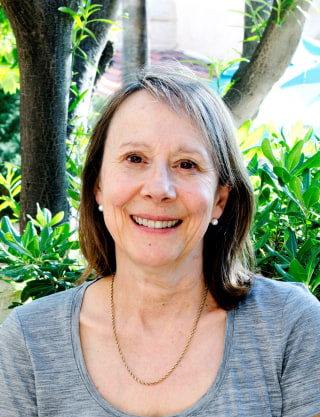
Esther
Dyson, a veteran tech and healthcare angel investor, is executive
founder of Way to Wellville, a 10-year project to demonstrate the value
of investing in health vs. spending on healthcare. It operates in five
small communities around the U.S. and is working with local
organizations to enhance their capacity to train and deploy local people
in caregiving and health-fostering programs.
In
2018, even as the country’s healthcare system is undergoing great
turmoil, we may start looking more closely and use big data to
understand what’s really going on. We will learn how to reduce costs —
not just the costs of healthcare and drugs, but also of unemployment/low
productivity and absenteeism, along with the social costs of poor
health, addiction, depression, crime and drug overdoses.
Related
Traditionally,
we’ve used clinical trials in healthcare, but they really don’t work
well with population health and social changes, with too many variables
to control. Now, with big data, and more data available through
everything from health records and fitness apps to public data such as
high school graduation rates and population demographics, we are
increasingly able to compare what happens with what would have happened
without a particular intervention. These interventions include prenatal
care, with measurable improvements in birth outcomes and reductions in
NICU (neonatal intensive care unit) costs, diabetes-prevention programs
now being offered by the YMCA and many other organizations, and mental
health/addiction counseling programs (which remain in extremely short
supply).
Progress in healthcare is notoriously
slow, so actual practice won’t change that rapidly. But with luck, some
communities will lead by example, and policy-makers will take note.
Oren Etzioni: Artificial intelligence crosses over
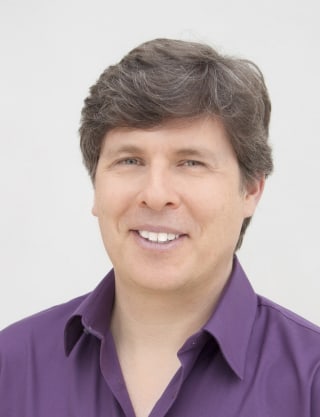
Dr.
Oren Etzioni is CEO of the Allen Institute for Artificial Intelligence
and a professor of computer science at the University of Washington,
both in Seattle.
In 2018, artificial intelligence
will cross over from razor-thin, narrow AI — the kind of bespoke AI
that beats people at Go and Poker, and other narrowly delimited tasks
but must be reconfigured manually for each new challenge — to broader,
multipurpose AI systems that can tackle several challenges using the
same software.
For example, we will see a
single AI that, once trained, can play multiple very different games,
answer questions on topics ranging from politics to science to cooking
to everyday life, and more. General AI is still decades away, but
razor-thin AI is so very 2017.
Jacqueline Faherty: The year of the Milky Way

Dr.
Jacqueline Faherty is an astrophysicist at the American Museum of
Natural History in New York City. She is co-founder of the citizen
science project Backyard Worlds, which invites anyone to help uncover
undiscovered worlds in the galaxy.
2018 will be the year of the Milky Way Galaxy. In April, the European Space Agency's Gaia Mission,
among the most ambitious in modern times, will release its second
catalog. It will include distances to over a billion stars and
velocities for several million. Scientists have waited decades for this
10,000-fold increase in the number of stars calculated with
unprecedented positional accuracy.
Based on
this new data, we will be able to generate an exquisitely detailed 3D
map of our home galaxy. We will uncover previously hidden structures of
stars and traces of recent and long-past star formation. Exotic objects
like hypervelocity stars will be revealed; we will be able to trace back
and project forward the positions of stars in the nearby solar
neighborhood and identify past or future stellar encounters. We will see
immediate results after April and get revolutionary insights into how
our galaxy formed and evolved.
Katherine Freese: Cosmic breakthroughs

Dr.
Katherine Freese is a professor of physics at the University of
Michigan in Ann Arbor and a noted expert on dark matter. She is the
author of "The Cosmic Cocktail: Three Parts Dark Matter."
Last October, an amazing neutron star merger event
was discovered via gravitational waves from the Laser Interferometer
Gravitational-Wave Observatory (LIGO), and 1.7 seconds later in 70
different detectors in all different wavelengths of light. That means
gravity travels at a speed very close to that of light. Combining all
this information has already been used to rule out many models of
gravity beyond Einstein’s relativity. As more events are discovered, we
will learn more about relativity, and about the numbers of neutron stars
and black holes of different masses. The black holes already
discovered, up to 30 times the mass of the sun, are a surprise, and we
will learn what other masses are out there.
Events in 2018 will also teach us about what astronomers call H0, the expansion rate of the universe.
Right now there is an interesting discrepancy between the value of H0
measured by cosmic microwave background experiments (the early left-over
light from the Big Bang) and the value measured from more recent
supernovas (exploding stars). The combination of more black hole and
neutron star events measured by both LIGO and electromagnetic detectors
stands to resolve this issue. Is the discrepancy real? If so, what is
the new physics it heralds?
Lawrence Krauss: Breaking the standard model?
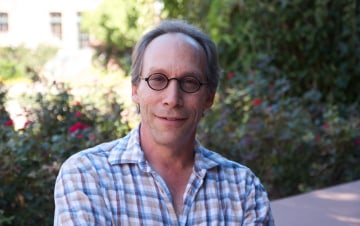
Dr.
Lawrence Krauss is a professor of earth and space exploration and
director of the Origins Project at Arizona State University in Tempe. He
is the author of nine books, including "A Universe from Nothing," "The
Physics of Star Trek", and "The Greatest Story Ever Told."
Either
the Large Hadron Collider or LIGO will observe events which are
inconsistent with our current understanding of the standard model of
physics and/or black hole physics.
This is more a hope than a prediction, because we really need new
empirical input if we are to move our ideas about fundamental physics
beyond the purely speculative stage.
Nature
needs to tell us the right direction to move in, and these two forefront
experiments are the best bets we have, in my opinion. Experiments
measuring dark energy are unlikely to reveal anything beyond what we
know, and I don’t think the next generation of dark matter experiments will be online in time to report any discoveries next year.
Ainissa Ramirez: Creating monsters?
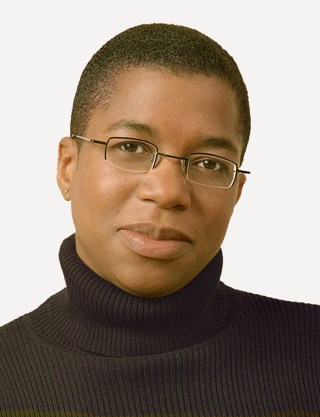
Dr.
Ainissa Ramirez is a scientist and science communicator, now writing a
book on how technology transforms us. She speaks worldwide about science
and education and hosts the podcast "Science Underground."
The year 2018 is the 200th anniversary of Mary Shelley’s "Frankenstein,"
in which a scientist neglects to ask about the consequences of his
creation. I suspect (and hope) that there will be much debate on the
impact of technology on our lives in the numerous lectures and events
scheduled this year. It is a long-overdue discussion because scientists
sometimes get so excited about their innovations that they forget to
ask, “Am I building a monster?”
This
anniversary offers a pause to see if society likes where it is headed.
With recent headlines such as a former Facebook leader expressing
remorse for his invention, the anniversary of "Frankenstein" provides an
opportunity to better understand the impact of our creations.
J. Marshall Shepherd: Weather forecasting improves

Dr.
J. Marshall Shepherd is the Georgia Athletic Association Distinguished
Professor at the University of Georgia in Athens and director of the university's atmospheric science program. He served as the 2013 president of the American Meteorological Society.
Weather forecasting
is often perceived as guesswork by the public. There is not a
meteorologist alive who has avoided jokes about the accuracy of
forecasts. But these are misperceptions. The current era of weather
forecasts, as witnessed during the society-altering 2017 hurricane season,
is quite extraordinary because of rapid advances in meteorological
knowledge, satellites, radar systems, and computer models. We now have
technology in place to provide significant lead time for landfalling
hurricanes, potentially tornadic storms, and multi-day flood events.
In
2018, I foresee significant strides in the "other" side of the forecast
and warning paradigm — the social science of meteorology. The weather
community has become cognizant of confusion caused by hurricane cones,
tornado warning "polygons," and "watch-advisory-warning" terminology.
Emerging research is exploring how the public consumes, interprets, and
acts upon weather messaging, warning colors, and risk factors. I predict
that the type of language and symbols used to convey weather warnings
will be streamlined and intelligently designed based on factors ranging
from psychological theory to cultural norms.
Seth Shostak: A Super-Earth for our solar system?
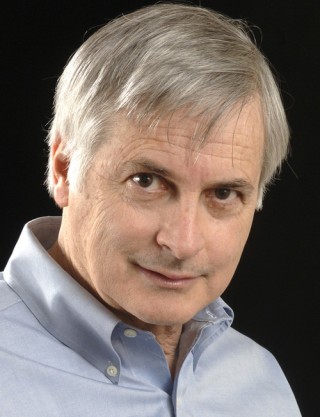
Dr.
Seth Shostak is the senior astronomer at the SETI Institute in Mountain
View, California, and director of the institute’s Center for SETI
Research. He is the author of "Confessions of an Alien Hunter: A
Scientist’s Search for Extraterrestrial Intelligence."
“My
very educated mother just served us nine pizzas” was the clunky
mnemonic used by generations of school kids to remember the nine planets
of the solar system. Alas, in 2006, the pizzas were trashed by the
International Astronomical Union, which stripped Pluto of its planet
status. In the following decade, the sun’s family suffered another
indignity when we learned that the most common types of planet in the
cosmos are the so-called super-Earths, bulked-up rocky worlds about twice the diameter of our own. Lamentably, our solar system doesn’t have one.
In
2018, remedies for both these affronts may be in the offing. It’s
possible that a replacement for Pluto will be found — not literally a
world to take its place, but one that can legitimately be called the ninth planet.
Caltech astronomers Mike Brown and Konstantin Batygin have accumulated
indirect evidence for an object that’s more than twice the diameter of
Earth, but 10 times as far from the sun as Pluto. The hunt is on to find
it, and the news will be big if astronomers succeed in bagging this
prey. It will add a super-Earth to our solar system — one we can both
study and possibly visit — and will give school kids a coveted ninth
planet to love. Whatever name is chosen should begin with a “P.”
Eric Topol: Gene-editing gains
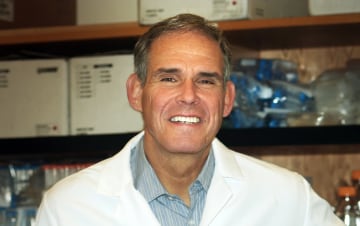
Dr.
Eric Topol is a professor of molecular medicine at The Scripps Research
Institute and founder and director of the Scripps Translational Science
Institute, both in La Jolla, California. He's the author of "The
Patient Will See You Now: The Future of Medicine is in Your Hands."
There are two parallel, powerful technology movements that will ultimately prove to be transformative in medicine: CRISPR genome editing
and deep learning artificial intelligence. In late 2017 we saw the
first patient receive genome-editing treatment for a rare disease; in
2018, more than 10 different medical conditions are moving forward in
clinical trials, including rare eye diseases, hemophilia, and sickle
cell anemia. Genome editing has the potential to cure many diseases for
which effective treatments have never been available.
Likewise,
deep learning, a subtype of artificial intelligence, is starting to
show major potential in medicine. The algorithms have been demonstrated
to interpret medical scans, skin lesions, heart rhythm abnormalities,
and pathology slides as well as or better than specialist doctors. Deep
learning will start to take hold in the clinic, first in ways to improve
diagnostic accuracy and efficiency of doctors’ workflow, and ultimately
for consumers as a virtual medical coach.
Sherry Turkle: Social robots fool us
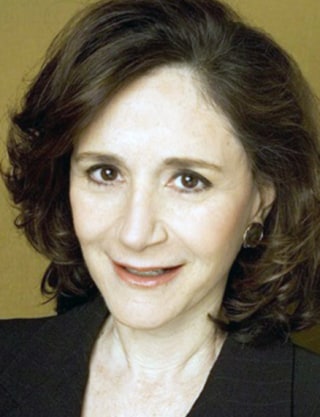
Dr.
Sherry Turkle is the Abby Rockefeller Mauzé Professor of the Social
Studies of Science and Technology at MIT in Cambridge, Massachusetts,
and founder and current director of the MIT Initiative on Technology and
Self. Her most recent book is "Reclaiming Conversation: The Power of
Talk in a Digital Age."
Robots have always
seemed like the cavalry that’s called in to do the jobs that put the
human body in danger. But we have long had the fantasy that they would
do more: that they would be our caring companions. And now our dream
comes true. My prediction: In 2018, sociable robots will be able to convince us that they are able to be empathic by passing an emotional version of the Turing Test,
a behavioral test we have taken as a measure of machine intelligence.
In the Turing test, a machine seems to “think” like a person. But
simulated thinking (say, for the purposes of playing chess) may be
thinking, but simulated feelings are not feelings, and simulated love is
never love. Our “success” in making robots that pretend empathy
involves deception with significant consequence.
Time
Magazine’s “invention of the year” was awarded to Jibo, a sociable
robot that responds to “Hey, Jibo,” and aspires to be a family friend.
With our fantasy-turned-reality comes the problem that we become
attached to robots in essentially inauthentic relationships because no
matter what they “say,” they have no fondness or compassion to give. And
we do get attached. We are vulnerable. Roboticists have learned that
nurturance is the killer app. When we teach or care for a robot, we
imagine that the robot cares for us in return. When we offer sociable
toys and digital pets to our children, we embark on an experiment in
which our children are the human subjects.
Will we be honest enough to confront the emotional downside of living out our robot dreams?
Moshe Vardi: Silicon Valley's comeuppance

Dr.
Moshe Y. Vardi is the George Distinguished Service Professor in
Computational Engineering and director of the Ken Kennedy Institute for
Information Technology at Rice University in Houston. He is the author
or co-author of more than 500 papers, as well as two books.
In
2017, there was a sudden recognition of several adverse societal
consequences of information technology, from job losses due to
automation to manipulation of public opinion, with significant political
consequences. This recognition has been accompanied by a dramatic drop
in the public view of Silicon Valley, long considered a hub of
innovation and economic growth. This view is expressed, for example, by Wall Street Journal columnist Peggy Noonan, who referred to tech's CEO's as "our country's real overlords" and described them as "moral Martians who operate on some weird new postmodern ethical wavelength."
I
expect this to become a major point of discussion in 2018, both inside
the technology community, struggling to cope with its social
responsibility, and at various levels of government, opening a discourse
about the possible regulation of technology. We will hear more regrets
from founders of tech companies about the addictive technologies they
have launched. We will start a discussion of cryptocurrencies as a
shadow banking system, which should be curtailed or tightly regulated.
Wendell Wallach: Tech turns deadly
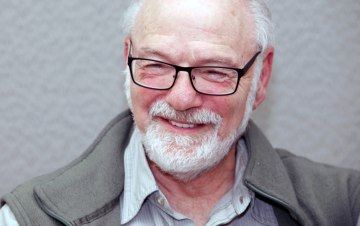
Dr. Wendell Wallach is a senior advisor to The Hastings Center and chair of technology
studies at Yale University's Interdisciplinary Center for Bioethics in
New Haven, Connecticut. His most recent book is "A Dangerous Master: How
To Keep Technology from Slipping Beyond Our Control."
A
serious tragedy will direct the attention of international leaders,
under public pressure, to finally take on the difficult but incredibly
necessary task of putting in place effective oversight and governance of
emerging technologies. The tragedy may be the result of a broadly
deployed cyberweapon that brings down critical infrastructure like a
power grid, or a database hack that exposes sensitive user data. A
terrorist or crazy kid may arm a drone with poison, killing innocent
people. The proposed treaty to limit the development of lethal
autonomous weapons will suddenly become more likely, as will stringent
controls on the handling of sensitive user data by social media and
other companies. Industry leaders, fearful of more stringent
restrictions on their activities, will lead the way for thoughtful
oversight of digital technologies.
I may be wrong — nevertheless, reaping the benefits of innovation and managing risks must happen together.
No comments:
Post a Comment